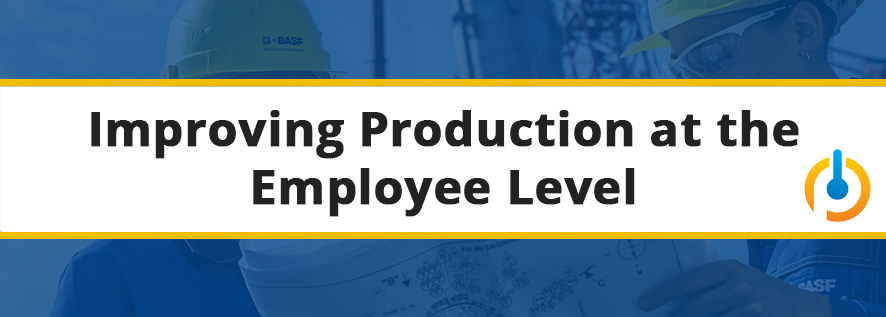
New technology in production management has begun to revolutionize the production industry. The implementation of this technology is relatively simple. You simply pay a company to code and install whatever tracking system you decide to go with. The bigger issue with the implementation is getting your employees to use a new system and keep up with it. It requires them to change their habits as well as get new training in some cases. How can you help motivate your employees to change to the new procedures so you can see benefits in the long run?
Make Company Goals
The first step is to make your goals known to your employees. With every positive step and improvement let your employees know that this is a success. Don’t just reward individuals for their effort — reward the company as a whole because it is an organizational success. This keeps it from being a competition between employees and instead allows it to be a team effort. If your goal is better production times, you will need to start a documentation process to track your outputs as well as breakdowns. This allows you to set goals for each shift and set up a maintenance plan. This sets everything up for both quick and long term successes.
Short Term and Long Term Changes
Documentation means more work for your employees. If you highlight that it is a short term pain for a long term gain, the process doesn’t seem nearly as bad. This means that if they take the time to document now, in the future they will only need to go back and reference the documents as opposed to constantly documenting forever. This also prevents a worse result where they have to do the same process over and over again without being to reference earlier occurrences.
The big example is documenting maintenance. When a breakdown occurs for the first time someone will need to document what happened, why it happened, and how it was fixed. This will be a long report and take time. Luckily, each breakdown should only need to be documented once. Once you have a good library of the various breakdowns documented this process will become a reading job as opposed to a writing job. This means that you will be able to set up preventative maintenance as well as fix breakdowns more quickly by looking at past solutions.
Getting Everyone on Board
If you can create a team mentality as opposed to a hero mentality with these changes more employees are willing to work in the new direction. The way you propose your changes will also have a big impact. Telling employees that they will have to do more work never goes over well. If you explain the reasoning behind your changes without leaving anyone in the dark, employees will be more receptive. A gradual change that will only cause more work for a brief time then less work in the future such as documentation, tend to make employees more willing to accept the extra work. A few employees will always be hesitant of change, but if you show them that you are working to make the change with them eventually every employee can get on board.
Choosing an Automation Solutions Team with a Winning Culture
An experienced automation company will know the value of the automation team as your best resource. With a team of engineers experienced in a broad range of automation and industries, Premier Automation can offer nationally ranked system integration for companies seeking a better way to manufacture. Reach out to us for a free consultation and our engineers can bring your automation system into the future.



